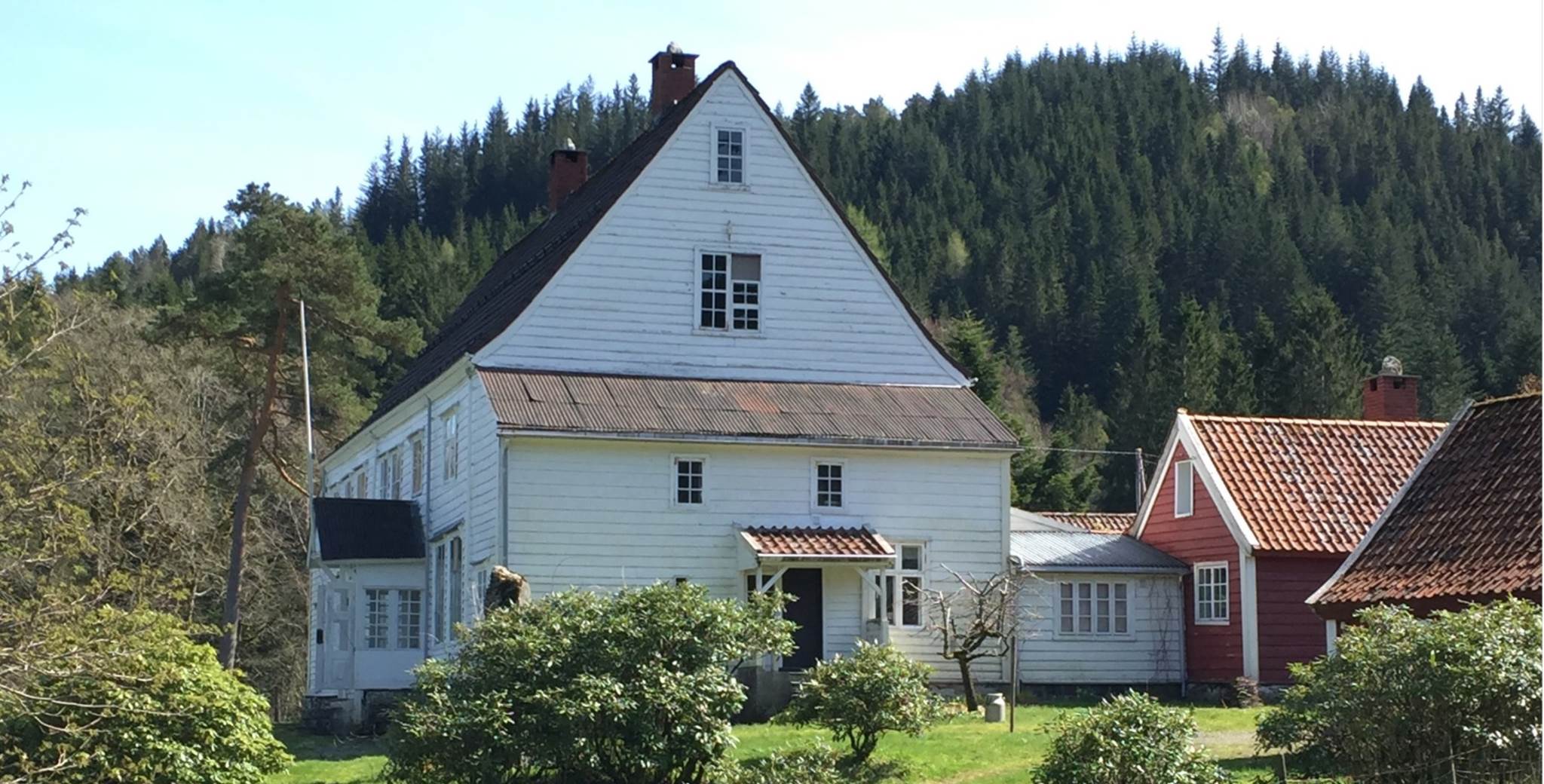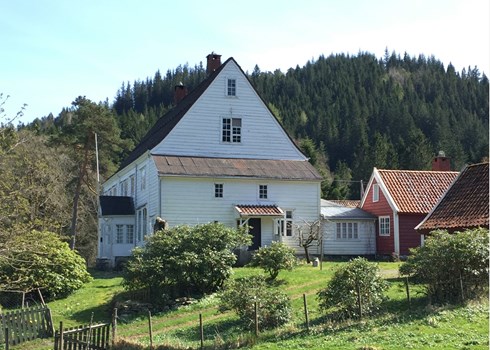

Flekke, Sogn og Fjordane (Vestland)
Owned by the National Trust of Norway since 2018.
From the large farm Tysse to the English upper-class home of the Lillingstons. Lillingstonheimen, as the farm has been known ever since the English family moved there, comprises a main house in the Empire style, servants’ quarters, an outhouse and a bakehouse, an English-style garden and a private graveyard which is now owned by the municipality. Claude Lillingston’s longest-surviving daughter lived in the house until her death in 1968 and left the house, park and garden to Fjaler municipality in her will. The house and family history tells the story of an exciting encounter between rural Norwegian culture and English upper-class traditions, but Tysse farm also has strong ties to the Landmark family and their considerable contribution to popular education and the development of Norwegian agriculture.
Family mark: The Lillingstons left their distinctive mark on the well-preserved interiors, which are a mixture of English and Norwegian style. The Landmarks left their mark on their time and the development of society in the 19th century. Nils Landmark held a law degree and was the district recorder and judge in Sunnfjord for many years, and from 1820 he was also a member of parliament. His son Lars Stub Landmark was a physician, bank manager and mayor of Fjaler. His daughter Marie Landmark ran a domestic science college and wrote Kokebog for land og by, a cookbook that played an important role in educating the public about a healthy diet and hygiene. His son Johan Theodor played a key role in connection with the formation of the Norwegian Farmers' Union in 1896.
Things to do in the area: The bakehouse bakers are keeping baking traditions alive using the wood-burning oven in the bakehouse. Enthusiastic local ladies hold courses nearly every week during the summer season. On a hill overlooking the farm, Claus Landmark designed a park that contains the Landmark family graveyard, Fredensborg. Today, this is a popular area for walks with a range of opportunities for outdoor pursuits. VisitSunnfjord
Opening hours
- Currently closed
Ticket prices
Visit us
Straumsnesvegen 56968 Flekke
Tlf. 992 59 072


